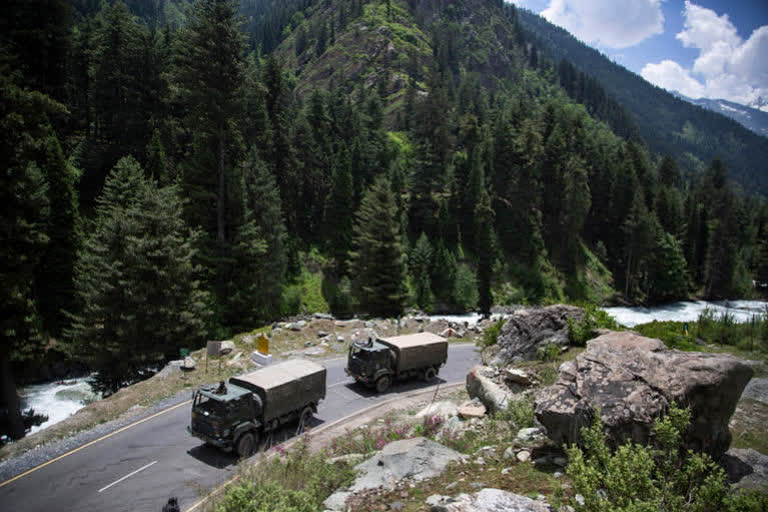New Delhi: More than 60 days since the May 5 face-to-face encounter on the northern bank of the Pangong Tso, military de-escalation between the India and China armies has hit a stubborn roadblock with the PLA bluntly refusing to move back any more from Finger 5 in the northern bank of the 134-km-long salt water lake located at nearly 13,800 feet in eastern Ladakh.
According to an informed source, the main hitch has been reported from Finger 5 area where the Chinese soldiers are currently positioned and are “refusing to move back any further”.
The PLA backward movement from Finger 4 to Finger 5 was completed in phase 1 of the disengagement and de-escalation process and the second phase from Finger 5 onwards was to have been undertaken. On being asked about the status, a senior military source told ETV Bharat: “Will wait and see the progress.”
This blunt refusal by PLA has also undermined the talks process between the two sides.
Another Indian army source told ETV Bharat on condition of anonymity: “Rebuilding mutual trust after the June 15 (Galwan Valley) incident will take time, therefore, speedy disengagement may be difficult to achieve. More engagement at military levels would be required to achieve complete disengagement”.
Extending from west to east, Fingers 4 to 8 are spurs that jut out in a north-south direction from the mountains southwards to the Pangong Lake. While India claims the Line of Actual Control (LAC) runs near Finger 8, China claims territory till Finger 3. In the past, while PLA patrolled from Finger 8 to 4, Indian Army patrolled from Finger 4 to 8.
Read: Indian Army and PLA committed to complete disengagement: Army after military talks
The Pangong Tso issue was a central point that could not be completely resolved during the marathon 15-hour-long meeting on Tuesday between Lt Gen Harender Singh, commander of the Leh-based 14 Corps, and Major General Lin Liu, commander of the PLA’s South Xinjiang Military district.
Stating that the confrontational situation is heading for a ‘long haul’, Lt Gen Rakesh Sharma (retd), who had commanded the 14 Corps, told ETV Bharat: “It is apparent that the PLA is dithering on early disengagement especially at Pangong Tso. We have had four meetings at corps commanders’ level. I feel we will have to continue the discussions. Meanwhile, we must maintain the pressure on the ground as also be mindful of other areas in eastern Ladakh, as there is absence of trust.”
Till now, four meetings at the corps commander level have taken place between India and China—June 6, June 22, June 30 and very recently on July 14.
The two sides have already stepped back at the other faceoff points at Galwan Valley (Patrol Point 14), Hot Springs (PP 15) and Gogra (PP 17) with at least a km separating the two sides so as to be beyond visual range as “tempers still run high” with the memory of the June 15 Galwan Valley physical fight that killed at least 20 soldiers still fresh in their minds.
WATCH: 'Galvan's PP14 and finger 4 with China'
Talks between the world’s two biggest armies have taken place at corps commander levels and below, special representative levels and diplomatic parleys to end the escalation brewing from territorial disputes.
The escalation in eastern Ladakh has been marked by brutal physical fights, eyeball-to-eyeball face-offs, and massive mobilization of much more than 100,000 Indian Army and PLA soldiers besides deployment of heavy artillery and air forces assets even as both sides realise that the process of restoring the status-quo to a pre-April situation will take time.



